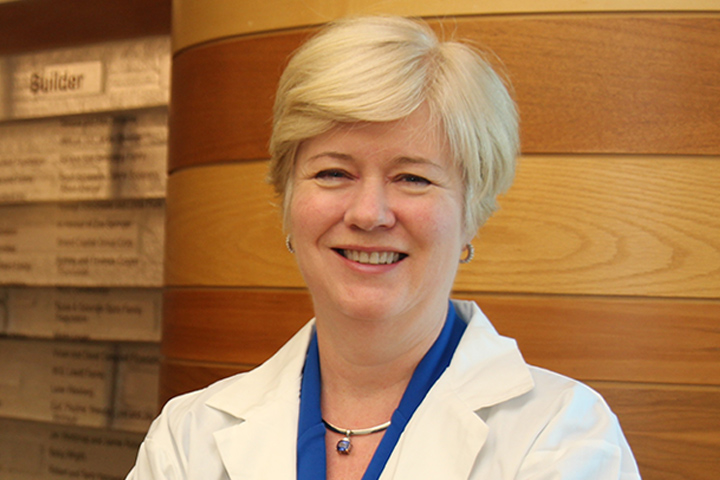Canadian Study NeoPancONE Focuses on Biomarker Validation

You don’t need to be a scientist to understand the concept of biomarkers.
They are simply characteristics of the body that can be measured. Your temperature, blood pressure, glucose, and cholesterol readings are all good examples of biomarkers that can inform your doctor about your health. Clinicians and researchers rely on biomarkers for many applications including diagnosis, disease staging, monitoring a clinical response to a drug, and disease prognosis, among others.
A new phase II study from Canada called NeoPancONE is focused on validating a tiny protein called GATA6 as a potential biomarker of response in upfront resectable pancreas cancer patients who receive neoadjuvant chemotherapy (before surgery) as well as adjuvant chemotherapy (after surgery.)
For patients who are candidates for surgery, this type of intervention, along with adjuvant chemotherapy, offers the best chance for a cure or longer-term survival. The dilemma is that many of these patients are too weakened after surgery to benefit from the potential extra help of adjuvant chemotherapeutic treatment. So today, in appropriate patients, neoadjuvant chemotherapy is gaining traction. Its goal is to expose a patient early on to systemic therapy potentially treating any micrometastatic disease, reducing the risk of seeding or spreading cancer cells during surgery, and potentially shrinking a tumor, making surgical intervention easier on the patient. However, not all patients respond to chemotherapy, and researchers want to find out which patients may benefit most. One way to do that is by looking at tumor biology and finding a biomarker that can provide upfront information on how an individual’s tumor might respond to drug therapy.
Study participants in the NeoPancONE trial will receive modified FOLFIRINOX (mFOLFIRINOX) in the neoadjuvant setting. In the post-surgical adjuvant setting they will receive either mFOLFIRINOX or another regimen. Researchers in the NeoPancONE trial want to prove that GATA6 can actually act as a biomarker, informing doctors and their surgical pancreas cancer patients who would benefit most from chemotherapeutic treatment in the neoadjuvant setting and eventually what drugs may work best depending on their tumor type.
“This trial is really a baby step, the first step is trying to show that GATA6 is a useful biomarker,” says lead investigator Jennifer Knox, M.D., FRCPC, codirector of the Wallace McCain Centre for Pancreatic Cancer, Princess Margaret Cancer Centre, Toronto. “We aren’t changing the standard of care on this trial, so patients are not being randomized. Rather, patients consent to a standard approach with the knowledge that we are going to look closely at the tumor at baseline biopsy and at surgery.”
NeoPancONE Idea Springs From COMPASS Trial Discoveries
At the 2019 Gastrointestinal Cancer Symposium researchers presented data from the Canadian COMPASS trial. The trial prospectively recruited patients prior to first-line chemotherapy for tumor whole-genome and RNA sequencing.
COMPASS focused on those with advanced cancer and the two standard regimens used as first-line treatment, Knox explains, adding that mFOLFIRINOX and gemcitabine–nab-paclitaxel are the first-line regimens used in this population. “But we don’t have any biomarker strategies that we choose for standard treatments,” she says. “It has really been a matter of clinical judgement and patient preference. So we don’t know who is going to respond best to which regimen.”
Data for the 150 patients in the intent-to-treat population showed that overall survival was almost four months longer for those having a so-called tumor type called a classic modified Moffitt RNA expression signature compared with those having a basal-like signature. Overall survival was more than two months longer for those having high versus low expression of GATA6. Among the subset of patients given mFOLFIRINOX, those having the classic signature were two-thirds less likely to die than were those having the basal-like signature. The basal-like cohort, which was GATA6-low, may be more resistant to mFOLFIRINOX, while those within the so-called classic group and GATA6-high may do better on mFOLFIRINOX, Knox says.
The next step is replicating the data. “From COMPASS we got this hint that classical did better on mFOLFIRINOX compared to the basal group,” Knox states. “Other researchers have seen this as well, and we all know now that pancreatic cancers are not all the same. We started to notice one gene, GATA6. You can simply measure it on a pathology slide. You don’t have to do a lot of complicated sequencing work to evaluate it.
“So what GATA6 did was allow us to separate the classical from the basal tumors, and it showed us different responses to chemotherapy. Now it’s time to test if those potential differences can be seen in the earlier resectable patient population. And if we can prove that then all of a sudden we have a potential clinical tool, measuring GATA6 in a baseline biopsy, which can be really beneficial for patients.”
Because these preliminary results in the COMPASS trial focused on advanced cancer, it is important to see if they can be replicated among patients who are candidates for surgery. “Surgery is the only chance for a cure, but we need a more targeted approach on how best to treat patients with systemic therapy both pre- and post-operatively,” Knox says.
“If we can reproduce the chemotherapy efficacy by GATA6 status seen in the COMPASS trial in the NeoPancOne trial now in the surgical setting, we could potentially separate patients based on a biomarker to treatment options in which they could do better. We could give them different chemotherapy, or different regimens. We could identify patients who could undergo standard chemotherapy and surgery with much better outcomes than the average statistics. We could suggest different approaches to those not likely to benefit from the standard approach and by avoiding noneffective therapy, improve quality of life. All of this is very important for pancreatic cancer patients because the outcomes, in general, are still poor. This is a way to improve that.”
More About NeoPancONE
The main objective of the study is to assess disease-free survival in resectable pancreatic cancer patients treated with perioperative mFOLFIRINOX according to their baseline GATA6 expression level. Among other objectives, the study also hopes to establish the general feasibility of perioperative chemotherapy more broadly in the Canadian medical environment for resectable pancreatic cancer patients.
The goal is to recruit about 85 patients across 10 cancer centers throughout Canada. Currently, only Canadian patients are eligible for the study, which is sponsored by Pancreatic Cancer Canada. The group created PancOne Network, focused on leveraging data on pancreatic cancer, with the goal of getting a deeper understanding of the disease and providing better/improved treatments, patient care, and quality of life for patients.
“Sometimes in medicine it’s a very hard pill to swallow that it may be better to not do something that isn’t going to work for a patient,” Knox says. “We absolutely need to know who can benefit from one type of regimen versus another type.
“I am extremely excited about this study. Launching a clinical trial is not a small job, and there is quite a bit of enthusiasm about a trial like this. We want to do it quickly so we can move forward to the next phase. We aren’t testing a drug. We are testing a biomarker, and that’s as important as any new treatment approach. Pancreatic Cancer Canada understands that.”
For More Information
To learn more about the NeoPancONE trial, contact Anna Dodd, Hepatobiliary Oncology Research Program Manager, Wallace McCain Centre for Pancreatic Cancer, Princess Margaret Cancer Centre.





